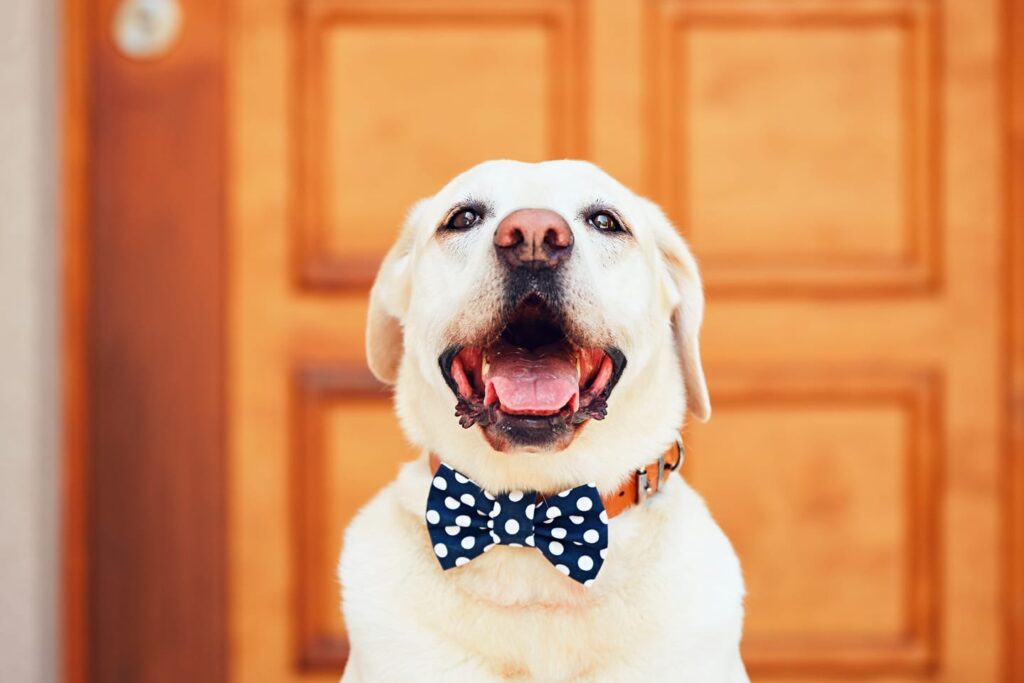How to Prepare for Your New Dog’s First Few Days


So you have decided to add to your family by bringing home a new dog companion. Good for you! This is the beginning of a long and beautiful friendship. To ensure that your relationship starts on good footing, here are a few tips on preparing for your new best friend.
First, we strongly suggest that you get identification for your new dog the very first day. Even if you’re not sure what your pet’s name will be, having your name and contact information on your pet’s collar makes all the difference in recovering your pet should they get lost.
Dog-Proofing Your Home
When welcoming a new dog into your home, you should proof it much like you would for a toddler. Examine your home in terms of what your new dog may have access to: things like electrical cords, garbage cans, cabinets, cat boxes, kitchen counters, fragile items and common household hazards. Dogs are not beyond searching for snacks underneath the bathroom sink, nor are they conscious that their tails can knock all precious items off a coffee table.
Here is a quick checklist that can help you in the house-proofing process. We suggest you go over this before bringing home your new dog:
- Are all fragile items off coffee tables?
- Are your candles out of the dog’s reach?
- Are your electrical cords (or anything else your new dog can chew, trip or entangle itself in) secured?
- Are your other pets kept in a safe and secure area?
- Is your yard completely fenced in?
- Are there any loose panels or gaps in your fence that your new dog can escape through?
- Are any of your plants or chemicals you use in your home or yard poisonous to dogs?
- Do you have a pool? Is it covered?
- Are all of your trash cans secured?
What Your Dog Needs
- It can be overwhelming to an animal, who has only known a small cage for the past days, weeks or months, to have full access to your home. Provide your dog with a “safe place,” such as a snuggly crate, a warm bed or a safe zone like a bathroom or bedroom.
- Provide your dog with daily exercise. Taking a daily walk is so beneficial! Keep in mind that anytime your dog is outside of a securely fenced area or your home, they should be on a leash.
- Provide constant access to fresh water so your dog is healthy, hydrated and comfortable.
- Toys are an important part of keeping your dog entertained, and they can also serve as a stress reliever, especially for his first few days in a new home.
- Provide a safe quiet place for your dog to eliminate (outside or inside on pee pads) in order to make house-training run smoothly.
- Daily human contact and positive socialization is extremely important, particularly for the first few days.
Your dog might cry or whine, sleep a lot, seem stressed, pace or show anxious behavior during their transition into your home and family. Do your best to be patient with these behaviors, even if they are difficult for you to see. It’s easiest to set good habits now than try to break bad habits later.
Keep in mind that dogs love routine and try to get your new pet on to a schedule as soon as possible. Having a set idea of what to expect each day will make your dog feel more comfortable. Additionally, try not to coddle your dog while he is displaying this type of nervous behavior, as this can reinforce it and lead to separation anxiety issues.



